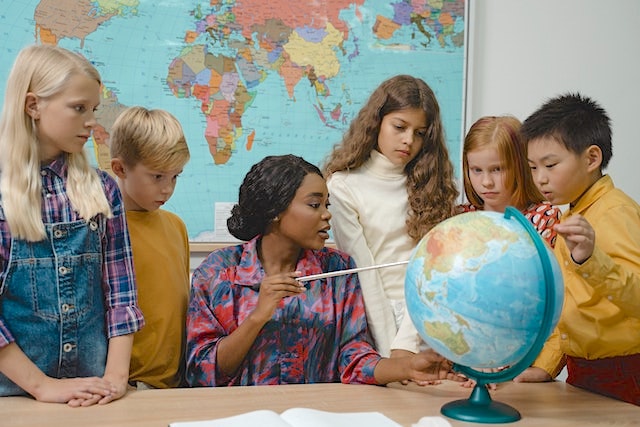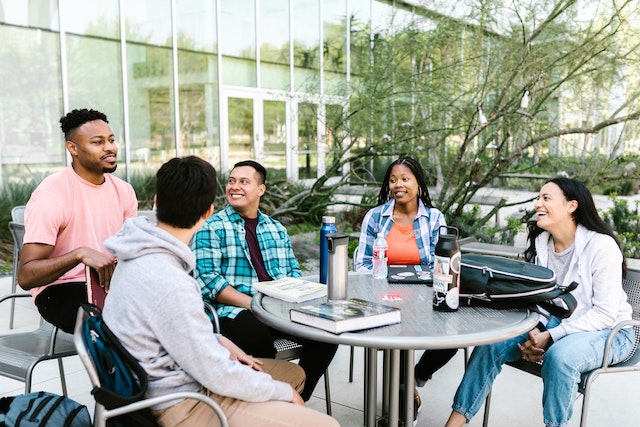Asia Society and BOOST Collaborative are partnering to create a series of blogs on global learning in out-of-school time. This blog entry was originally published on EdWeek’s Global Learning Blog. This entry is written by Monica Logan, vice president of program and systems quality at the National Summer Learning Association.
Summer will soon be upon us.
According to a report supported by The Wallace Foundation, an estimated 25 percent of our nation’s youth participate in summer learning programs leaving the majority subject to the troubling effects of summer learning loss.
High-quality summer programs are critical for reducing summer learning loss which “disproportionately affects low-income students [and] contributes substantially to the achievement gap.” Research has shown that hallmarks of high-quality programs such as individualized instruction, parental involvement and low teacher-student ratios help to better prepare students for success in our interconnected world. A global theme infused into a summer learning curriculum enriches the experience for students of all ages. Below are a few strategies that bring global learning to life during the summer.
A Global Theme Gives Students a Passport to the World
 Three years ago, the New York City Department of Education, in collaboration with the New York City Department o
Three years ago, the New York City Department of Education, in collaboration with the New York City Department o
f Youth and Community Development and The Fund for Public Schools (FPS) developed the NYC Summer Quest pilot program to improve, expand, and sustain summer learning opportunities for NYC public school students. One strategy of this program was to identify a global destination theme and then integrate and frame program content and youth outcome goals around it. The “Passport to the World” theme was used by one of the sites over the course of three years. The first year students explored Mexico, then South Africa, and in the third year Peru and China.
By incorporating activities reflecting the global theme, youth are encouraged to go beyond the surface, to build subject matter expertise and skill mastery through deep analysis of a subject or idea. Students were also encouraged to share their cultural heritage orally, through writing or arts projects. These are great ways to celebrate student achievements in global learning and to engage parents, families, and community members. If you are focused on a single country theme, students can also do comparisons.
Books Open the Door to the World in the Digital Age
Also consider engaging youth in art, books, or digital media projects, which are excellent ways to cultivate youth voice and choice and help students connect to each other.
A good book is still one of the greatest ways youth can explore the world and summer is an ideal time for instructional innovation that can transform teaching and learning year-round. The Global Read Aloud: One Book to Connect the World, is an inspiring initiative that started in summer of 2010 in Oregon and Wisconsin. In just five years, with a little technology and a great love of reading, this movement has reached 500,000 students in 60 different countries.
Libraries across the country are also reinventing themselves to help youth rediscover literacy in the digital age. In an effort to help teachers navigate through the seemingly infinite amount of digital learning tools available, Common Sense Education, a leading independent advocate and reviewer of media and technology tools, created Graphite, a free online resource to assist “…preK-12 educators discover, use, and share the best apps, games, websites, and digital curricula for their students…”
Reading at home can also have a big impact on reducing summer learning loss when supported by access to a variety of books that match children’s interest and ability levels and when comprehension is guided by an adult.
The Arts Foster Cross Cultural Understanding
Similar to literacy, research supports how arts education fosters cross-cultural understanding. The Adobe Foundation is among the champions of digital media and is inspiring youth to harness the power of digital media to tell compelling stories and affect social change. Over the past decade, the Adobe Youth Voices program has impacted 190,000 young people in 60 countries. The collaborative nature of digital media and the performing and visual arts also promote

s youth voice and can facilitate learning and exploration of cultures and customs from around the globe.
The summer offers freedom to explore the world and to keep all kids learning so that they thrive in the school year ahead.
The National Summer Learning Association (NSLA) is the only national nonprofit exclusively focused on closing the achievement gap by increasing access to high-quality summer learning opportunities. For more information and to learn about Summer Learning Day activities happening on June 19, visit www.summerlearning.org.
Follow NSLA, Heather, Asia Society, and BOOST Collaborative on Twitter.
Visit the National Summer Learning Association for information about how your organization can apply for the Summer Learning Award and the Founder’s Award. These awards recognize outstanding summer programs or models that demonstrate excellence in accelerating academic achievement and promoting healthy development for young people between pre-kindergarten and twelfth grade.
Photo courtesy of Asia Society.
